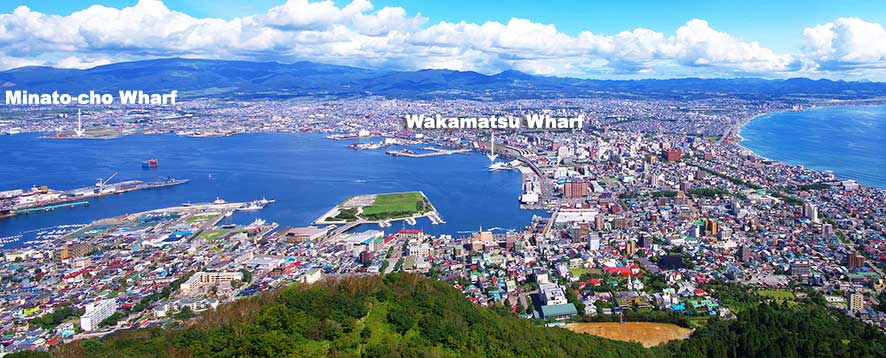
by Philbert Ono, Updated: Feb. 3, 2023
Facing the northern end of Japan’s main island of Honshu, Hakodate has long been Hokkaido’s main gateway by the sea and everyone’s favorite port town. The city has many tourist sights near and far, and the cruise ship dock is in the heart of the city.
Cruise ships usually dock at Wakamatsu Wharf next to the Mashu Maru museum ship in central Hakodate. An alternate dock for mega cruise ships is Minato-cho Wharf further away. Wakamatsu Wharf just opened the new Hakodate Cruise Terminal in September 2022. The terminal building is open only when there is a cruise ship docked. Open only to passengers and not to the public.
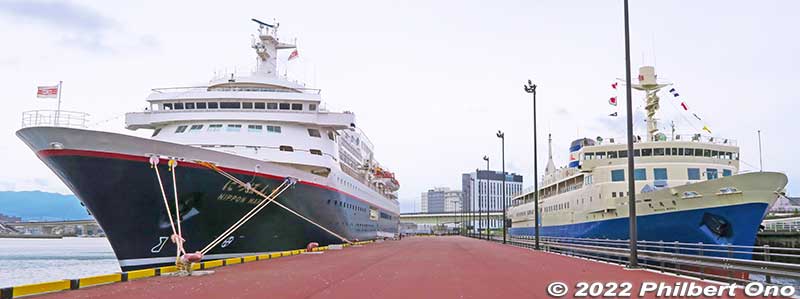
Right near Wakamatsu Wharf is JR Hakodate Station, southern Hokkaido’s main train station and public transportation hub. In front of the station is a rotary of bus stops, taxi cabs (always available), and a tram stop (Hakodate Ekimae).
There are also rental bicycles at Kiralis Hakodate mall in front of Hakodate Station. Bicycles are available during non-winter months. Great for touring the compact city at your own pace. To tour the city, just start from Hakodate Station.
The train station also has a tourist information desk and a large gift shop and convenience store. See the list of nearby sights below.
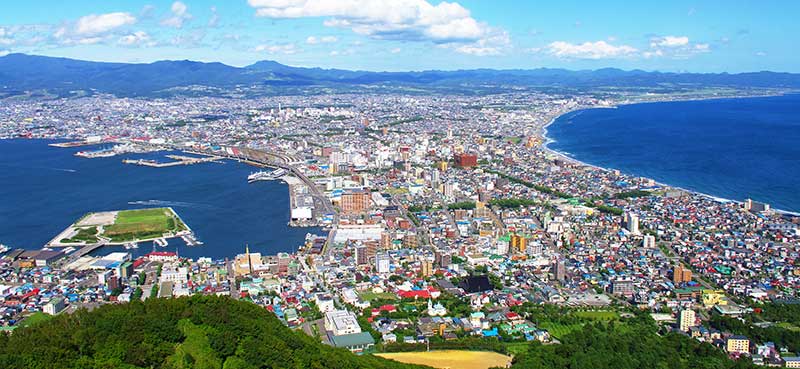
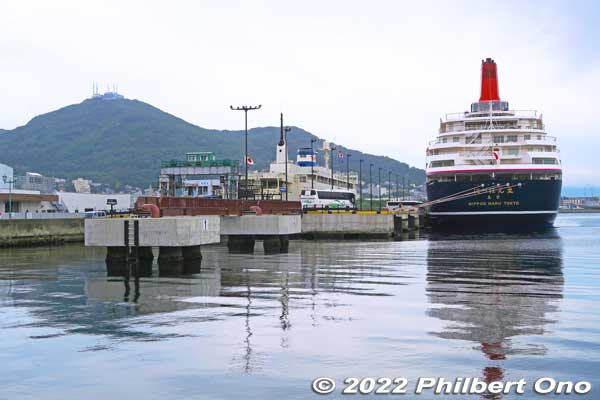
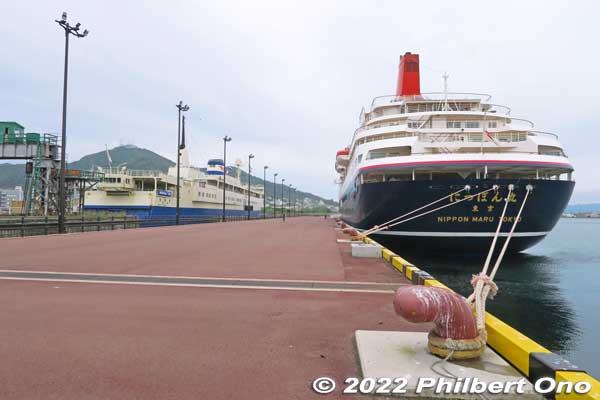
Hakodate Port history
With an excellent natural harbor shaped like a comma, Hakodate was destined to be a great port city and Hokkaido’s main maritime gateway.
Hakodate Port started to see significant development from the early 19th century when the Tokugawa government and prominent local merchant Takadaya Kahei reclaimed land in the port area.
Hakodate developed as a fishing base and Hokkaido gateway for people and cargo traveling to and from Honshu and other places. Kahei established maritime trade routes between Hakodate and the Kurile islands, Nemuro, and Erimo.
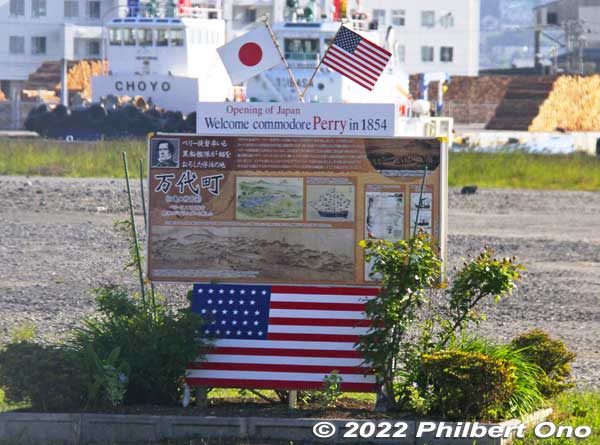
Hakodate cemented its place in world history when it became one of the treaty ports opened to American ships in 1854 and to international trade in 1859. It was instigated by U.S. Navy Commodore Matthew C. Perry who sailed to Japan in July 1853 with his menacing “Black Ships” to open up Japanese ports.
While brandishing his navy guns during that first visit and a second visit in February 1854, Perry gave Japan’s samurai government no choice but to sign the Japan-US Treaty of Peace and Amity (Kanagawa Treaty) on March 31, 1854 to open Shimoda (Shizuoka) and Hakodate Ports to American ships.
Two months later on May 17, 1854, Perry and his fleet of five warships visited Hakodate to survey the port. From 1855, U.S. whaling ships started to call on Hakodate for essential provisions and coal.
In July 1858, the Treaty of Amity and Commerce between Japan and the United States (Harris Treaty) was signed to allow the U.S. to trade with Japan at Hakodate, Yokohama (Kanagawa), and Nagasaki, and later Niigata and Kobe (Hyogo) from 1859.
Foreigners started living in Hakodate, but instead of being confined to a designated foreign settlement area like in Yokohama and Kobe, they ended up being scattered around the city. A few of their remaining Western-style buildings are now tourist sights.
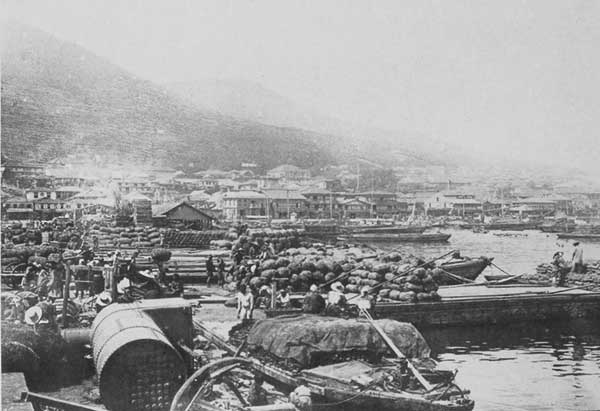
The amount of international trade through Hakodate was not as high as in Yokohama and Nagasaki. Hakodate eventually exported mainly konbu kelp to China.
During December 1868 to June 1869, the Battle of Hakodate saw fighting between the Tokugawa shogunate’s former army and the new Emperor-backed, Imperial army and naval forces. The former Tokugawa army, led by Enomoto Takeaki, rebelled against the new Meiji government and escaped to Hokkaido to form the new Ezo Republic. The rebels were quashed during the battle which included a naval battle in Hakodate Bay in May 1869.
Hakodate, which means “Box Pavilion,” got its name when a local lord built a box-shaped, waterfront garrison in 1454. In Japanese, it was written as 箱館. However, in 1869, the Meiji government renamed it as 函館 which is pronounced the same and basically means the same. Hakodate Port was also so renamed.
Regular boat service between Hakodate and Aomori across the Tsugaru Strait started as early as 1861 when a sailing ship made the voyage once every five days. From 1873, the Hokkaido Development Commission had a boat making three roundtrips per month. Multiple companies started operating boats between Hakodate and Aomori including NYK Line (until 1910).
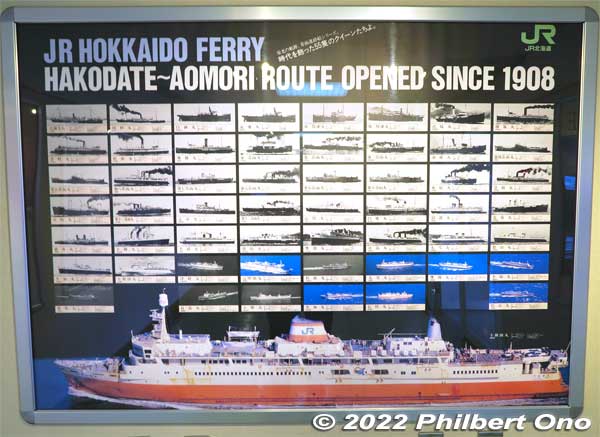
From 1908, Seikan train ferries (Aomori-Hakodate 青函) started regular service between Hakodate and Aomori. However, both Aomori and Hakodate Ports still had no piers where the train ferries could dock. The ferries anchored offshore, and train cars and passengers were transferred onto barges to go ashore. By 1925, piers were built to load and offload train cars and passengers directly. In 1932, Wakamatsu Wharf was built with railway tracks to accommodate the trains on Seikan train ferries.
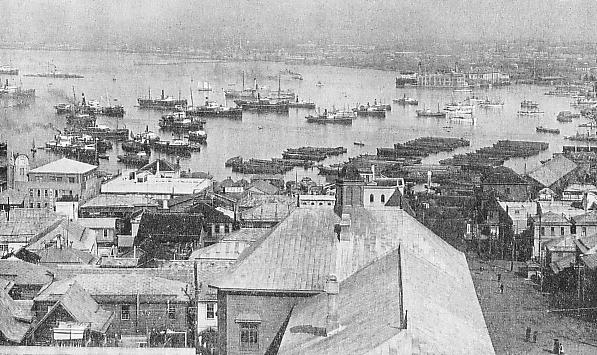
Until the 1930s, Hakodate Port continued to prosper with the local fishing industry working in the Northern Pacific, Sea of Okhotsk, and Bering Sea.
During World War II, Hakodate and Hokkaido suffered the worst losses during the final month in July 1945. Over 3,000 U.S. Grumman fighter planes from 13 aircraft carriers (such as USS Independence, USS Lexington, and USS Randolph) sailing unopposed off southern Hokkaido attacked Hokkaido’s major cities south of Rumoi. Muroran, Kushiro, and Nemuro were heavily attacked for their military factories.
Steel town Muroran was bombarded by battleships Iowa, Missouri, and Wisconsin with over 800 16-inch shells fired from around 30,000 yards (17 mi.) away. Over 400 civilians died in Muroran.
Sapporo miraculously largely escaped the attacks with only one fatality, a farmer. Along with Kyoto, Niigata city, and Kanazawa, Sapporo was largely unscathed by World War II.
Hakodate and Aomori Ports were also major targets when over 300 Grumman fighter planes from U.S. aircraft carriers USS Randolph, Monterey, and Bataan sank or disabled all twelve Hakodate-Aomori Seikan train ferries in port or at sea on July 14–15, 1945. A total of 425 passengers and crew were killed.
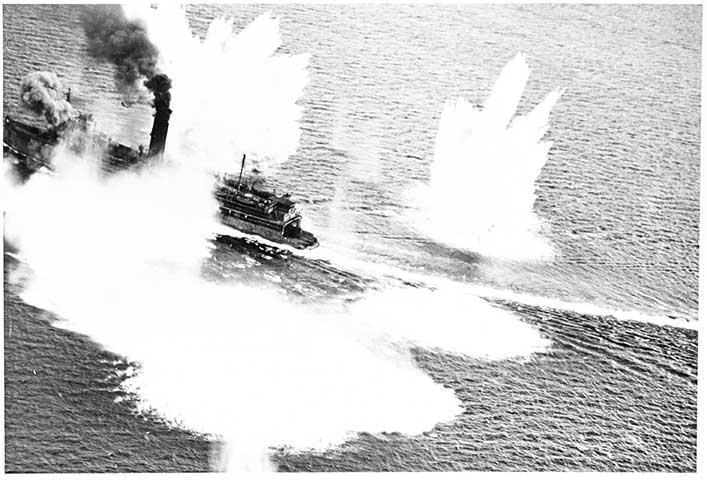
Seikan train ferries transported Hokkaido’s coal and foodstuffs to Honshu. Hokkaido produced 30 percent of Japan’s coal production. Coal was essential for Japan’s military industries for making steel, etc., and for power generation. Although it was more efficient to transport the coal directly by ship from Hokkaido to industrial zones in Honshu, most cargo ships were already sunk. Rail transportation therefore became the main means to transport cargo.
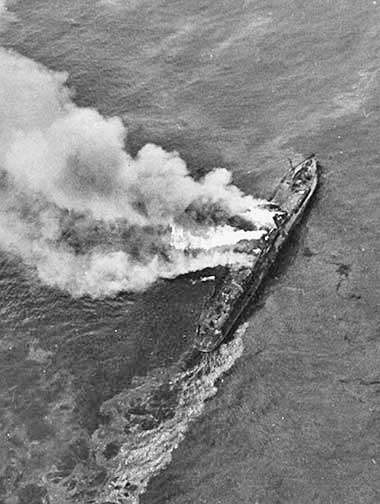
Since the Seikan train ferries carrying cargo trains were a vital supply link from Hokkaido to Honshu, they also were a military target.
Hokkaido and Kyushu were Japan’s biggest coal producers. Although the Seikan train ferries were decimated, Japanese newspapers the next day reported that damage from the air attack was “extremely light.”
Three days before the air attack, Seikan ferry management knew that an attack was imminent and requested the Japanese military to allow the ferries to evacuate to a safe place. However, the truly insane and suicidal Japanese military rejected it, saying that putting the Seikan ferries on holiday even for a day would imply that the war was lost.
The first Seikan train ferry to be sunk was Seikan Maru No. 4 (第四青函丸) in waters off Hakodate. Seikan ferries were actually outfitted with machine guns. However, Seikan Maru No. 4 was the only one unarmed and totally defenseless under attack. It sank after 45 minutes.
In July 2020, the Seikan Maru No. 4 wreck was finally found and identified after 75 years. It was lying on its side on the ocean bottom over 100 meters deep near Hakodate.
An NHK TV pogram showed the daughter (83) of the deceased captain who went down with the ship. She gave prayers when she was taken to the location of the wreck. There are still two other war-sunken Seikan ferries not yet found. Many other ships were sunk in the Tsugaru Strait during the attack.
After the war, Seikan ferries revitalized Aomori and Hakodate again. However, another major tragedy struck in the form of Typhoon Marie (named “Toya Maru Typhoon” in Japanese) on September 26, 1954 when five Seikan ferries sank outside Hakodate Port’s breakwater, killing a total of 1,430 passengers and crew.
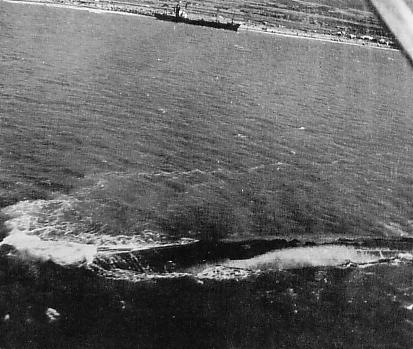
Most of them (1,155) were on the Toya Maru (洞爺丸). Only 150 survived. The captain had thought the typhoon had passed when there was a lull in the winds. So he decided to sail.
However, soon after the ferry went outside the port, the winds and waves became fierce. The captain laid the anchor to wait it out. However, the ship still drifted, dragging the anchor amid high winds and waves.
Water also entered the ship’s vehicle-loading entrance at the stern, flooding the boiler and engine rooms. The engines stopped working and the ferry had no propulsion. The captain decided to beach the vessel to prevent it from sinking. Passengers were ordered to wear life jackets.
The ferry was beached at Nanaehama (七重浜), but listing to the right. Rescue boats were sent out, but they turned back due to high waves.
The waves further tilted the ship until it turned on its right side. Loaded vehicles and cargo also slid to the right and the boat soon capsized completely and sank with the funnel downward. The captain was among the deceased.
This tragedy spurred plans to construct the Seikan Tunnel between Aomori and Hokkaido under the Tsugaru Strait. Seikan ferries were also retrofitted for better water resistance. There’s the Toya Maru Typhoon Memorial Monument (洞爺丸台風海難事故慰霊碑) on shore at Nanaehama (Hokuto city) near where the Toya Maru sank.
After ferrying for 80 years, the Seikan train ferry service ended in March 1988 when the undersea Seikan Tunnel opened for trains to run between Aomori and Hokkaido.
After the Seikan Tunnel opened, a number of car ferries and hydrofoil boats served the Aomori-Hakodate route. Some have come and gone or merged, and currently only two companies, Seikan Ferry Co. and Tsugaru Kaikyo Ferry, operate this route taking about four hours. Taking the ferry is cheaper than taking the Hokkaido Shinkansen which started service through the Seikan Tunnel from March 26, 2016.
In 1991, the Mashu Maru former Seikan train ferry opened as a museum ship at Wakamatsu Wharf where Seikan train ferries originally operated. In 2018, right next to Mashu Maru, a cruise ship pier was built in a prime location near Hakodate Station. Then in September 2022, the new Hakodate Cruise Terminal opened on Wakamatsu Wharf.
Hakodate Port has since been operating happily ever after.
Hakodate Port shore excursions on foot
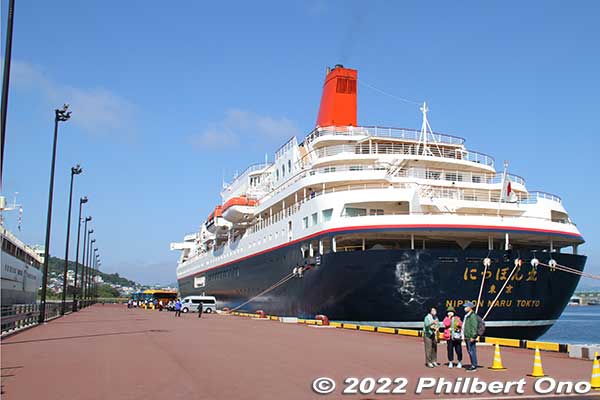
Passengers arriving by cruise ship will usually dock at Wakamatsu Wharf (若松ふ頭) next to the Mashu Maru museum ship. Although this wharf has been here for many years for the Seikan train ferries connecting to rail tracks on the pier leading to Hokkaido railways, the cruise ship pier is new, built in 2018 with a length of 225 meters and depth of 8 meters. Since the pier is new, it might not appear on existing maps and tourist photos.
The new Hakodate Cruise Terminal, open only when there’s a cruise ship, has tourist information, restrooms, CIQ, and waiting area with a fine view of Mt. Hakodate.
From the cruise ship pier, you can walk to JR Hakodate Station. The train station has gift shops, bus stops for buses running to all parts of the city, and taxis. There’s also the Hakodate Ekimae tram station nearby.
Renting a bicycle (available at Kiralis Hakodate in front of Hakodate Station) is another option to tour the city on your own during non-winter months.
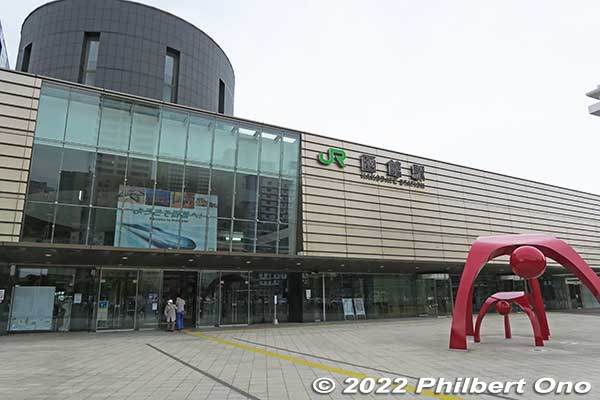

- JR Hakodate Station – Hakodate’s main train station in the heart of the city next to the port. It’s on the Hakodate Main Line which goes to Sapporo and Asahikawa. Trains also run on the Donan Isaribi Line going along the scenic coast to Kikonai (Hokkaido Shinkansen station). Note that this is not Hakodate’s Hokkaido Shinkansen station which is further north at Shin-Hakodate-Hokuto Station, about 20 min. by train from JR Hakodate Station.
- Hakodate Ekimae Station – Tram stop near JR Hakodate Station. Convenient for going to Mt. Hakodate or Goryokaku Castle.
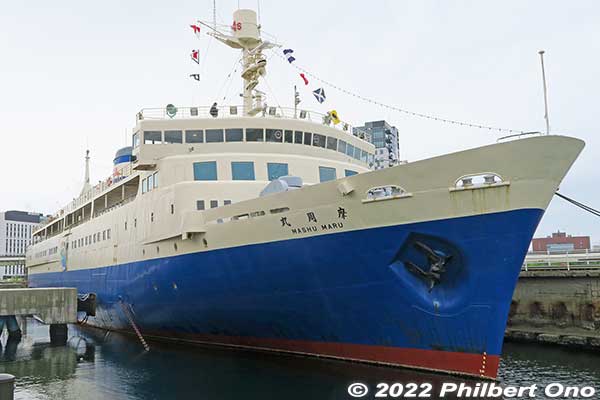
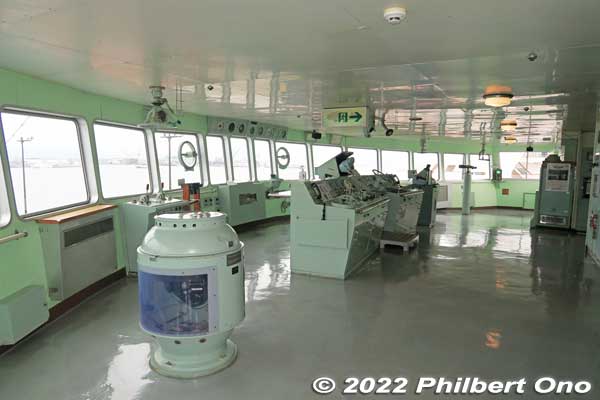
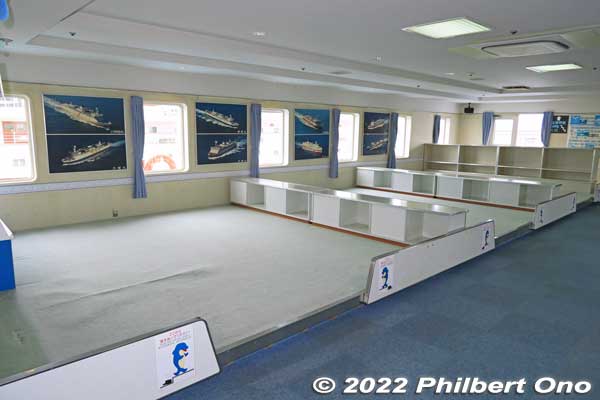
- Mashu Maru museum ship – Named after Lake Mashu, Mashu Maru was a Seikan train and passenger ferry (青函連絡船) sailing between Hakodate and Aomori across the Tsugaru Strait until 1988 when the Seikan railway tunnel was completed. Mashu Maru opened as a museum ship in 1991. It is moored at the same dock where Seikan train ferries originally docked while in service. Visitors can tour the inside and top deck. Third Class cabin had carpeted spaces for 25 passengers each to sit or rest. Mashu Maru is right next to the cruise ship pier.


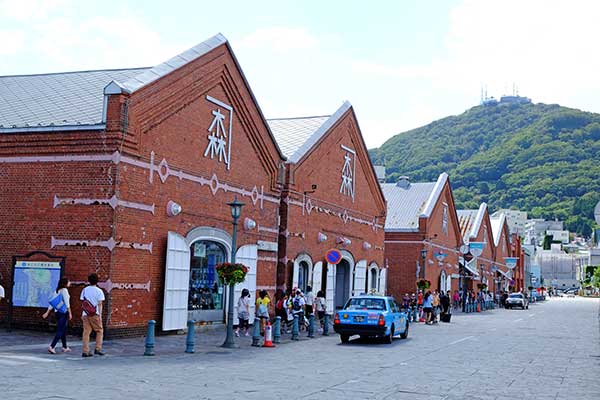
- Hakodate Morning Market – Lots of seafood stalls and eateries. Website
- Kanemori Red Brick Warehouses – Seven large, red-brick warehouses built in 1909 on reclaimed land next to the port and foreigner’s settlement. They were originally used to store all kinds of things like boat parts and housing materials. The picturesque warehouses have been renovated into restaurants, beer hall, and shops. National Important Traditional Townscape. 15-min. walk from Hakodate Port or Station. Website
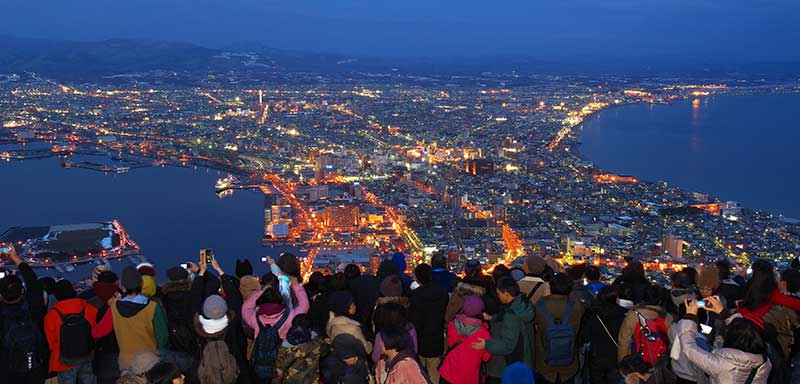
- Mt. Hakodate-yama – The summit of Mt. Hakodate is the city’s most famous attraction for sweeping views of the city. Easily accessible by ropeway. Also beautiful in the evening. Closest tram station is Jujigai Station. Ropeway website here. Mt. Hakodate website.
- Hakodate City Museum of Northern Peoples (函館市北方民族資料館) – Museum of Ainu and Orok artifacts. Building used to be the Bank of Japan’s Hakodate Branch built in 1926.
- Hachiman-zaka Slope – Almost like San Francisco, the top of the slope on the foot of Mt. Hakodate gives great views of the cruise ship pier.
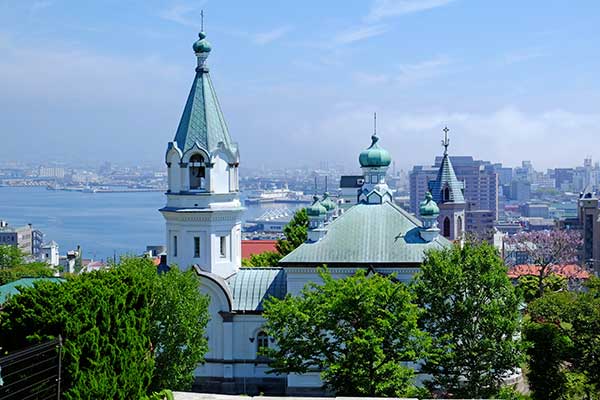
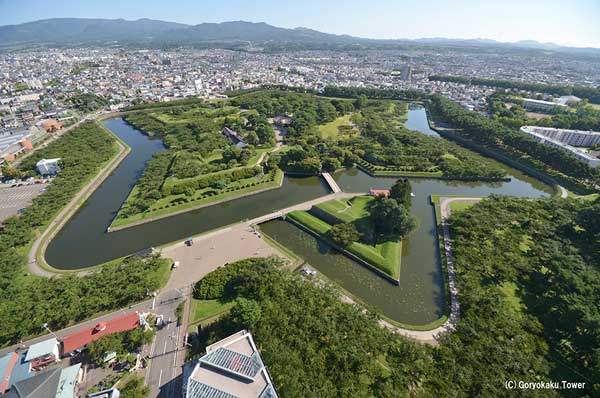
- Hakodate Russian Orthodox Church – Founded in 1858 by the Russian Consulate. Current church building dates back to 1916. There are other old churches in the area, but this is only one designated as a National Important Cultural Property. Website
- Goryokaku Castle – Star-shaped, historic fort. Hakodate’s other major tourist attraction and Special National Historic Site. Cherry blossoms in spring and fall leaves. A little too far to walk from the port. Go by tram (get off at Goryokaku-koen-mae Station) or bicycle. Website
By train from JR Hakodate Station or tour bus:

- Matsumae Castle – The last Japanese castle to be built (1854) during the samurai’s Edo Period. It was the base of the Matsumae Clan who ruled Hakodate and the Matsumae area. The original castle tower was destroyed by a fire in 1949. The current castle tower is a 1960 reconstruction, serving as a three-story museum. From JR Hakodate Station, take the Donan Isaribi train to Kikonai Station. Then take the Hakodate Bus bound for Matsumae and get off at the Matsushiro (松城). Small admission charged. Closed Dec.–March.
- Yokozuna Chiyonoyama & Chiyonofuji Memorial Museum (横綱千代の山・千代の富士記念館) – Sumo museum dedicated to two of the greatest sumo grand champions Chiyonoyama (1926–1977) and Chiyonofuji (1955–2016) who were from Fukushima, Matsumae. See their mawashi ceremonial aprons, topknot, trophies, and a replica of their sumo stable ring.
From JR Hakodate Station, take the Donan Isaribi train to Kikonai Station. Then take the Hakodate Bus bound for Matsumae (60 min.) and get off at the Fukushima bus stop (福島). Small admission charged. Closed Dec.–March. The Seikan Tunnel Museum is also nearby.
Also see: Yokohama | Tokyo | Kobe | Hakodate (Current page) | Nagoya | Kanazawa
Reference
Port of Hakodate: https://www.city.hakodate.hokkaido.jp/docs/2019020800086/
Cruise Port Guide (Hakodate): https://www.mlit.go.jp/kankocho/cruise/detail/004/index.html
Reference: https://www.soumu.go.jp/main_sosiki/daijinkanbou/sensai/situation/state/hokkaido_01.html
Cruise Port Guide of Japan: https://www.mlit.go.jp/kankocho/cruise/list/
Content Navigator
Ports for Cruise Ships in Japan
- Cruise ship departure ports
- Japan’s popular ports of call
- Shore excursions
- Mega-ships and harbor bridges
- Japanese port history
- Port town songs
- Major Japanese Ports: Yokohama | Tokyo | Kobe | Hakodate (Current page) | Nagoya | Kanazawa | Toyama | Amami-Oshima Naze | Yakushima Miyanoura
- Ship comparison
- Japanese cruise ship advantages
- COVID-19 protocols
- Basic cruise rules
- Safety Record
- FAQ
- Asuka II
- Nippon Maru
- Pacific Venus
State of Japanese Cruise Industry in mid-2022
- COVID-19 not over yet
- International cruise ships in Japan
- Japan still closed to international cruising
- Essential Japanese Vocabulary